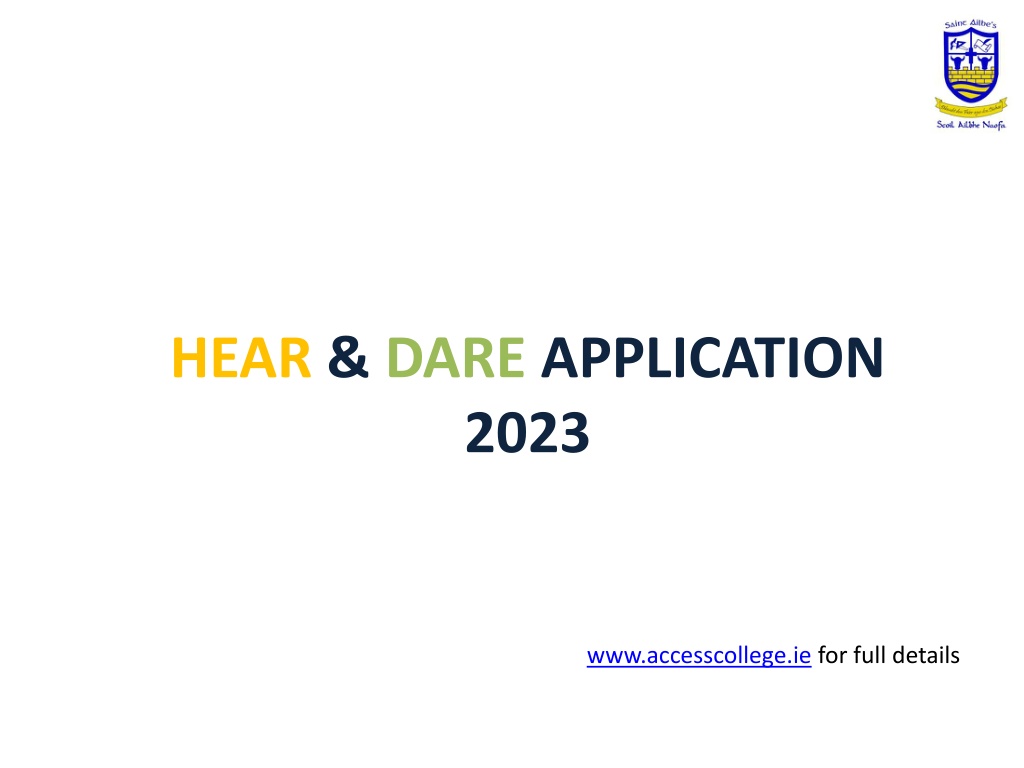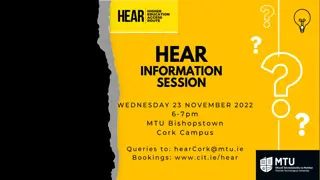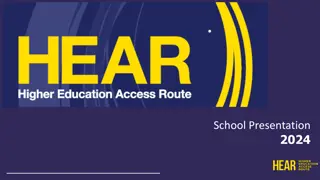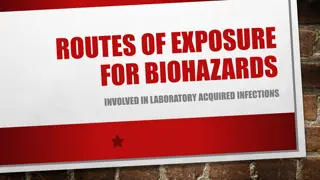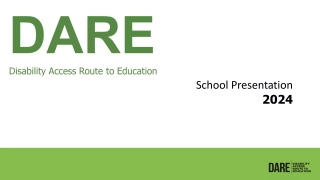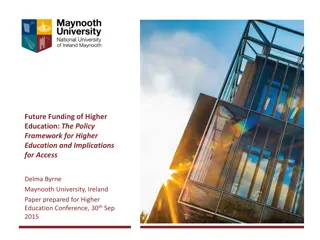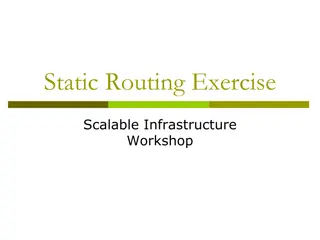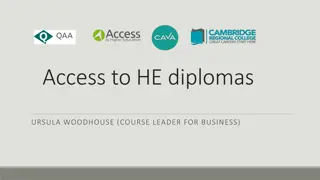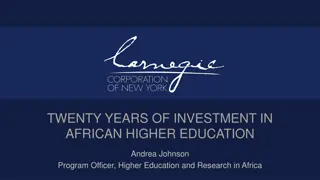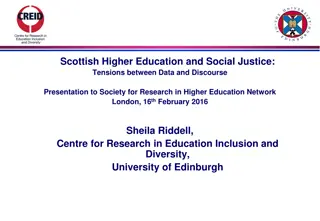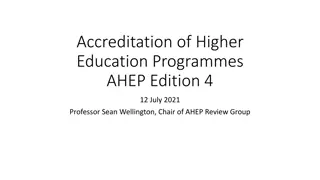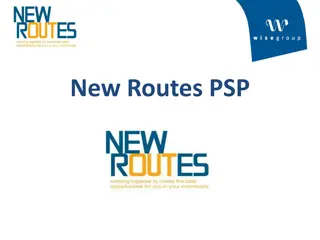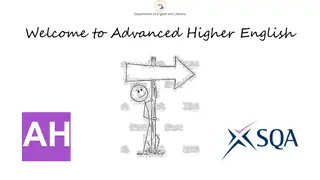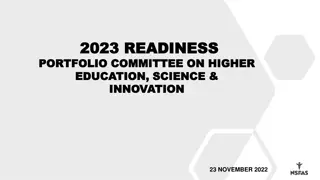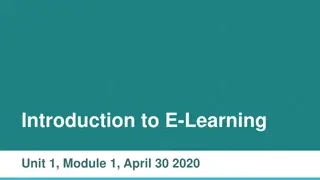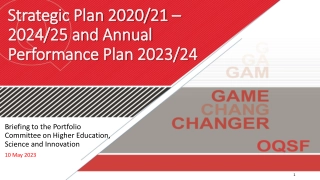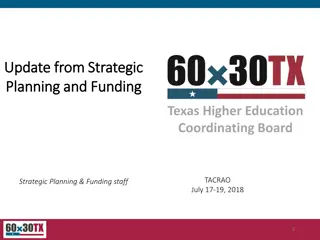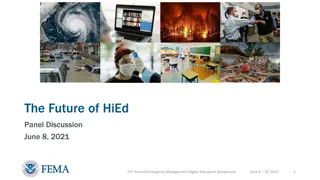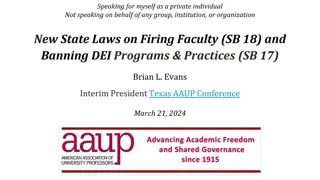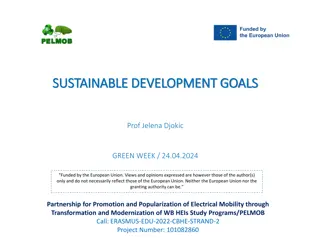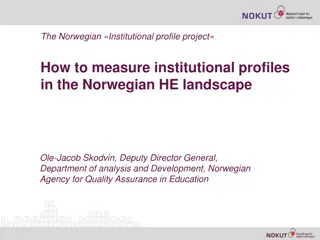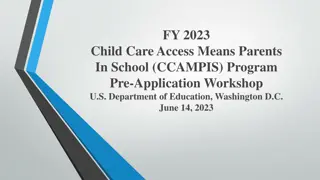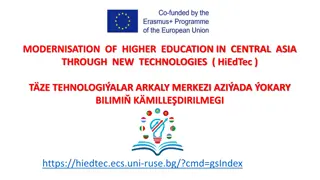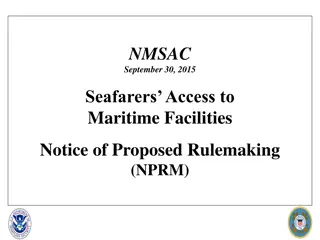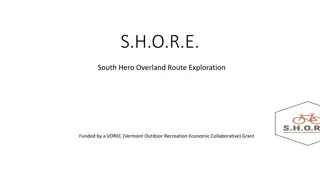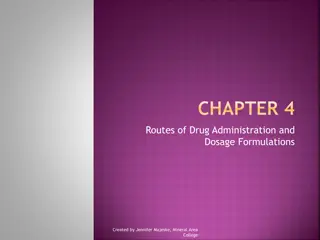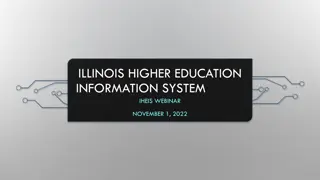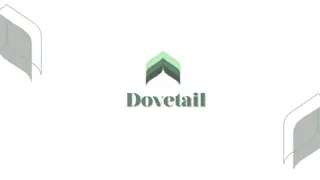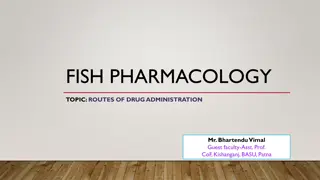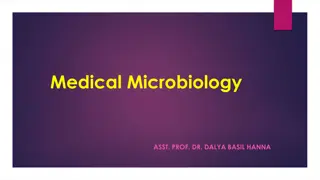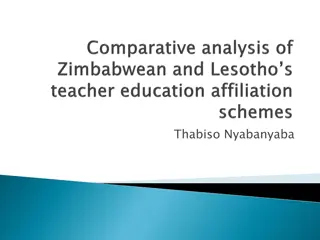Higher Education Access Routes 2023: HEAR and DARE Applications
HEAR and DARE are Higher Education Access Routes for students facing financial or health-related challenges. Eligible candidates may secure college placements with reduced points and additional support. Various colleges participate in these schemes to help disadvantaged students realize their educational goals.
Download Presentation

Please find below an Image/Link to download the presentation.
The content on the website is provided AS IS for your information and personal use only. It may not be sold, licensed, or shared on other websites without obtaining consent from the author. Download presentation by click this link. If you encounter any issues during the download, it is possible that the publisher has removed the file from their server.
E N D
Presentation Transcript
HEAR & DARE APPLICATION 2023 www.accesscollege.ie for full details
HEAR DARE Higher Education Access Route It is a third level admissions scheme for school leavers from socio-economically disadvantaged backgrounds. Eligible students may be offered places on reduced points and receive extra supports places in colleges that run the scheme. Disability Access Route to Education It is a third level alternative admissions scheme for school leavers whose disabilities have had a negative impact on their second level education. Eligible students may be offered places on reduced points in the colleges that run the scheme
What does reduced points mean? If you apply to HEAR/DARE and meet the application criteria you may be offered a place even if you do not have enough Leaving Certificate points for your preferred course. CAO points 350, HEAR/DARE 340 You still need to meet the minimum entry requirements and any specific programme requirements before being considered for a HEAR/DARE Each of the colleges set aside a quota of places for HEAR/DARE students each year.
Which colleges offer HEAR & DARE MTU Cork IT & Tralee IT Dublin City University Dundalk IT Dun Laoghaire Institute of Art, Design and Technology IT Carlow IT Sligo Letterkenny IT TUS - Limerick IT, Athlone IT, Ennis, Clonmel & Thurles Marino Institute of Education Mary Immaculate College National College of Ireland NUI Galway Maynooth University Royal College of Surgeons in Ireland (RCSI) St Angelas College Sligo Technological University Blanchardstown Campus Technological University Dublin City Campus Technological University Tallaght Campus Trinity College Dublin University College Dublin University College Cork University of Limerick Waterford IT Maynooth *HEAR ONLY Galway-Mayo IT
How do I know if Im eligible to apply to HEAR *Indicator 1 - Low Income (Must have Indicator 1 plus correct combination of 2 other indicators) Is the household income below the HEAR Income threshold in 2021? 46790 fewer than 4 dependant children Indicator 2 - Medical Card Your family has a Medical Card/GP Visit Card in date on 31st December 2022. Indicator 3 - Social Welfare Is the applicant s parent(s) or guardian in receipt of a means-tested social welfare payment or a minimum of 26 weeks in 2021.
Indicator 4 - Socio-Economic Grouping (based on occupation and employment status) Is the applicant a member of a group underrepresented in higher education i.e. non-manual workers, semi and unskilled workers. *Indicator 5 - DEIS School (Every St Ailbe s Student) DEIS scheme (Delivering Equality of Opportunity in Schools) for the duration of their second level education. Indicator 6 - Geographical Area Does the applicant live in an area of concentrated disadvantage high unemployment and poverty, or a small proportion of adults attend third level education. Search for Pobal maps deprivation
The combinations of Indicators for eligibility are: 1+ 2 + 4 or 5 or 6 INDICATORS 1Income 46790 2 Medical/GP Visit Card 3 Social Welfare Payment (26 wks 2021) 4 Socio-economic Group (non-manual, semi & unskilled manual workers) 5 DEIS School 6 Concentrated Disadvantage 1+ 3 + 4 or 5 or 6 1+ 4 + 5 or 6 1+ 5 + 6
DARE Application Must have a disability which has/had a negative impact on their second level education.
What disabilities are eligible for consideration for DARE? Attention Deficit Disorder (ADD) * Attention Deficit Hyperactivity Disorder (ADHD) Autistic Spectrum Disorder (including Asperger's Syndrome) Blind/ Vision Impaired Deaf/ Hearing Impaired Developmental Coordination Disorder (DCD) Dyspraxia Mental Health Condition * Neurological Condition (including Brain Injury and Epilepsy) Physical Disability Significant Ongoing Illness * Speech and Language Communication Disorder Specific Learning Difficulty (including Dyslexia and Dyscalculia)* * Dated after 1 Feb 2020 * Additional school based testing
Providing Evidence of your Disability Your evidence of disability documentation is a crucial part of your application to DARE. It is used by DARE to establish whether or not you meet DARE s evidence of disability criteria and therefore overall DARE eligibility. In addition, it is used by DARE colleges and universities to determine the kinds of supports you might need when you get to college. Your application will not be complete until you provide evidence of your disability by 15 March 2023. Evidence could be a report from an Appropriate Professional, e.g. Psychologist, Ophthalmologist, various depending on the disability.
DARE Application Section A: Applicant Information (Tick Box Exercise) Q1 Do you wish to be considered for DARE? Yes No Q2 Please indicate your primary disability/specific learning difficulty. (Tick one, form the list, which has the greatest impact on your education) Q3 Do you have any other disabilities/specific learning difficulties. Yes No Q4 Please list the supports you received in 2nd level. Please also kit the supports you may required in 3rd level. Accessible Accommodation Examination Support Alternative Print Format Learning Support Assistive Technology Note-taker Campus Orientation Personal Assistant Counselling Sign Language Interpreter Dyslexia Support Wheelchair Access Transport Other(s) please specify
Q5 The Personal Statement outlines, from your point of view, the impact your disability or specific learning difficulty is having on your education. This is an opportunity for you to tell us about your experience of being in school and the challenges you faced. This can include (but is not restricted to) your examination performance, access to texts/ materials, memory/concentration issues, meeting deadlines, attendance, engagement with extracurricular activities and/or the supports you needed for the educational impact of your disability.
Section B: The Educational Impact Statement (EIS) This allows you and your school to provide details of how your disability has impacted on your second level experience. The appropriate teacher in your school will complete the EIS. The school will complete the form and print off all pages. You and your parent/ guardian must sign the form. Your form MUST sign AND stamped by the school.
Meeting DAREs Educational Impact Criteria Applicants must meet a combination of *two indicators * Applications with Specific Learning Difficulty must meet indicator 6 + one other. All others any two indicators.
IMPORTANT HEAR/DARE Applications are embedded within the CAO application, if you do not tick on the relevant box, within the CAO application, you will not gain access to the HEAR & DARE applications. The information appears after the Qualifications Sections in the CAO application Disability If you wish to disclose a disability or Dyslexia/ Significant Literacy Difficulties or Dyscalculia/ Significant Numeracy Difficulties or apply to the Disability Access Route to Education (DARE) click on the 'Modify Disability (& DARE Application) Status' button below.
Higher Education Access Route (HEAR) (Further Information ) (for school-leavers from socio-economically disadvantaged backgrounds) The Higher Education Access Route (HEAR) is a third level admissions scheme for school leavers from socio-economically disadvantaged backgrounds. You must complete all relevant Sections (1-8) of the online HEAR application by 17:00 on 1 March to be considered for HEAR Click on the HEAR Application button below to complete your online HEAR application. SUSI - Maintenance/Fee Grant Application (Further Information) All new student Maintenance/Fee Grant applications will be made online to SUSI (Student . Universal Support Ireland) through their website at www.susi.ie (see also www.studentfinance.ie). Please refer to the SUSI web site for details of courses that may be eligible for student grant funding from SUSI. If you wish to apply for a grant, you may indicate this on your CAO online application. CAO will then provide your Identification, Contact and Offer/Acceptance details to the grant authority (SUSI).
HEAR/DARE Application Timeline CAO applications opens 5 November 1. Make an application 2. Fill the on line HEAR /DARE application 3. Gather information Evidence of Disability and Financial info. Closing date to apply to CAO by 5:15 on 1st February You must indicate you wish to be considered for HEAR/DARE You must return the completed, signed And stamped Educational Impact Statement Evidence of Disability Financial Documentation to support HEAR application Keep copies of all documents and get certificate of postage. HEAR & DARE application assessments Notified of outcome of HEAR/DARE applications, after which you can appeal. Applications notified of outcome of appeal LC results, eligible HEAR/DARE applications compete for reduced points places, CAO offer to successful applicants, accept offer. Attend mandatory HEAR/DARE orientation
